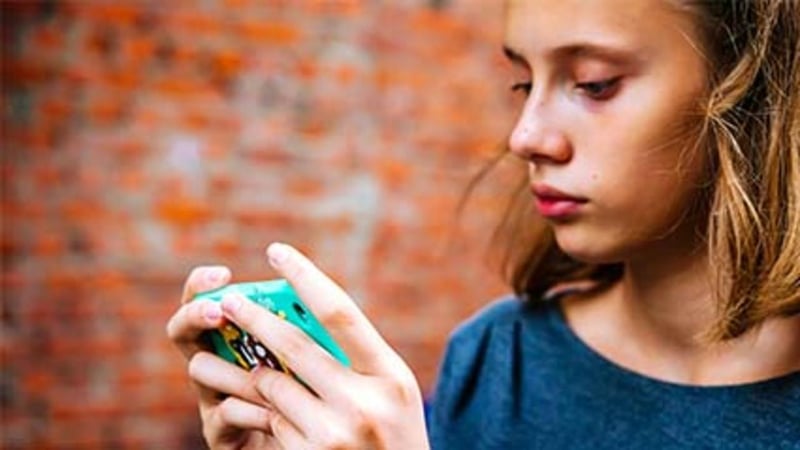Manténgase sano!

- Cara Murez
- Posted December 7, 2022
1 in 10 Teens Have Sexted, Many See Porn by 6th Grade: Study
A high number of preteens and teens in the United States have viewed pornography and many have also sent or received nude or seminude photos -- sexting -- over their smartphones, a new study reveals.
"The prevalence rates we found in this study suggest that school counselors must be prepared to talk about sexting and pornography use with students, and to change the narrative about these behaviors,"said Amanda Giordano, lead author of the study and an associate professor in the University of Georgia Early College of Education, in Athens.
"It's important that students know that sending a sext is not a new requirement for romantic relationships and that pornography does not reflect expectations for sexual activity,"Giordano added in a university news release.
For the study, the researchers questioned 350 students, aged 12 to 17 years. The investigators found that 15% had sent a sext to someone. About 25% had ever received a sext. About 25% had ever been asked to send a sext. About 12% said they had felt pressure by someone to send a sext in the past year.
This pressure was concerning because of the unintended consequences of sexting, such as having the picture forwarded to others, put online or used as a form of blackmail to get the person to meet other demands, the researchers said.
"If your boyfriend, girlfriend or peer is asking for a sext, let's talk through some of the possible risks,"Giordano said. "These are conversations that we need to have with adolescents, and they can happen at home or in schools. Adults need to keep up with technology and current trends so that we're not just giving youth access to smartphones and hoping they make wise decisions. We need to prepare them for potential risks."
About 50% of adolescents said they had been exposed to pornography. On average, kids were exposed to pornography for the first time at age 11.5 -- typically the age of American 6th graders and younger than previous studies have suggested.
Increased smartphone access among teens and the ease of finding free internet pornography likely drove that age drop, Giordano said.
More than one in three of the participants said they had viewed pornography at least once in the previous year. And 8% of the students said they watched pornography about every day.
Pornography use was significantly more common among males, the study found.
"Pornography use has been linked to a range of negative outcomes among children and adolescents. And pornography is a terrible sex education teacher for kids. However, for children who haven't had conversations about healthy sexuality, they might not have anything to compare it to,"Giordano said.
"What we see from the research is that adolescents are developing their sexual scripts and beliefs about sex from what they're seeing in pornography, which can have varying degrees of violence, aggression and degradation of women,"she added.
It's important for schools to have a sexting policy already in place, Giordano said. Then when a student comes to a staff member with a picture they have received or are being asked to send, the school will have a plan for what to do.
"Schools need to have conversations with legal counsel about what the sexting policy should look like in their state given the child pornography laws, so they already know how they will respond,"Giordano advised.
Providing accurate information to students about pornography and the risks of sexting is key as well, she said. For example, explaining that pornography uses actors and often isn't an accurate depiction of healthy, consensual, safe sexual practices is important.
"We're teaching students to be good citizens, and that should include promoting responsible, healthy tech use, known as digital citizenship,"Giordano said. "Technology isn't going anywhere, so we need to set students up for success by teaching them how to be good global, local and digital citizens."
The report was published online recently in Professional School Counseling.
More information
The U.S. Department of Justice has more on internet safety for youth.
SOURCE: University of Georgia, news release

